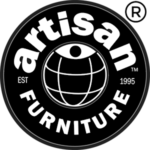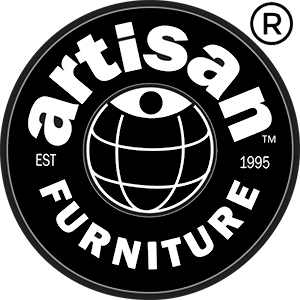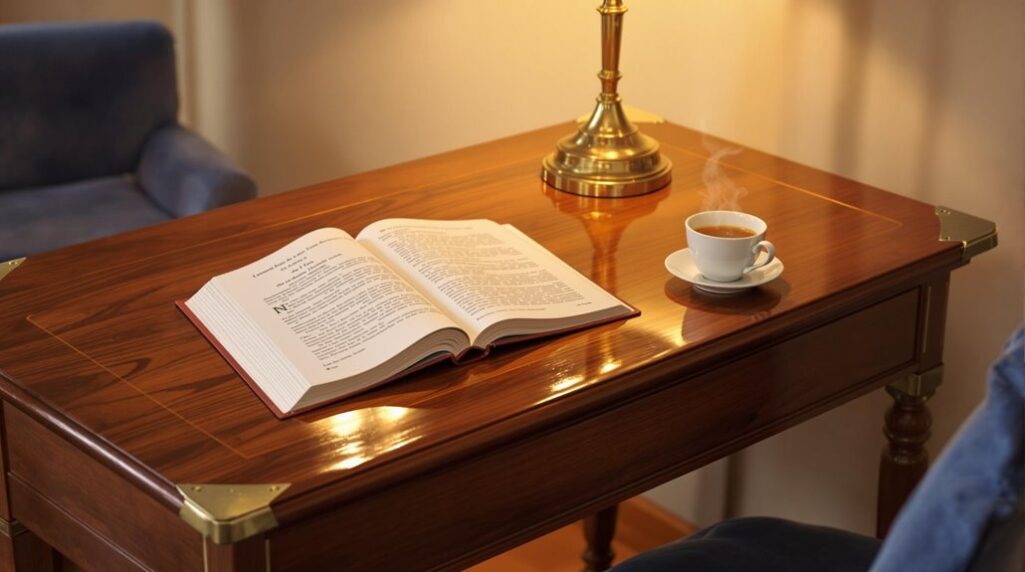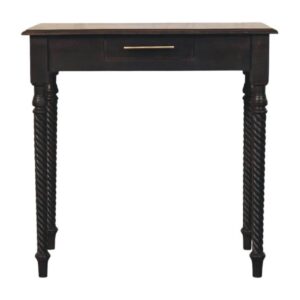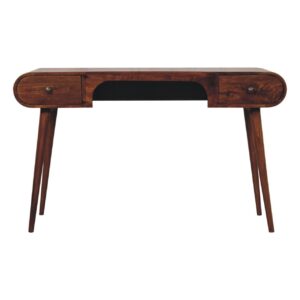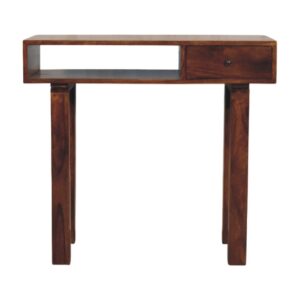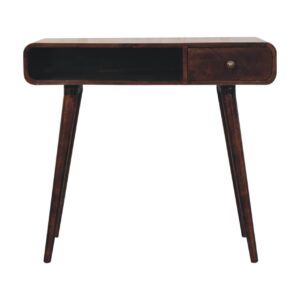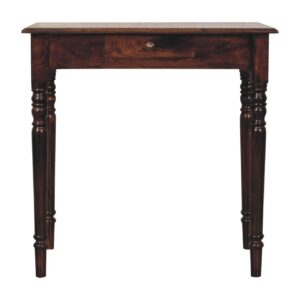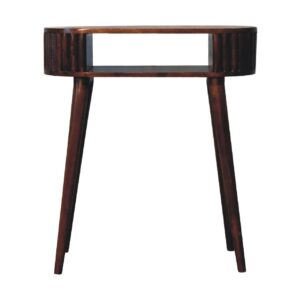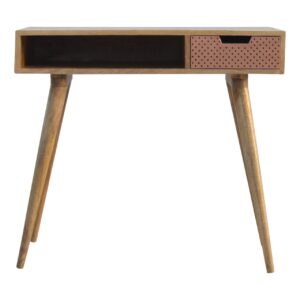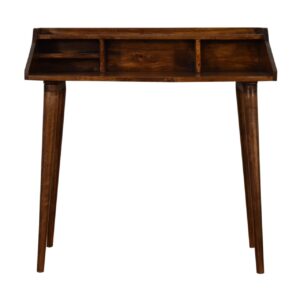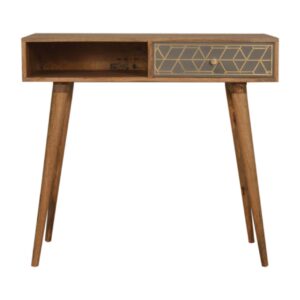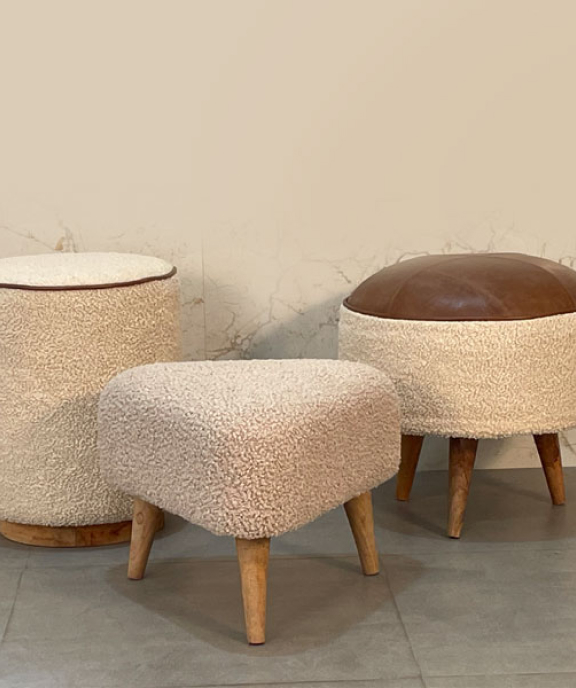A reading desk is often termed a writing desk or study desk. These desks serve as practical workspaces for various activities such as writing, reading, or using a computer. You'll find several types, including traditional writing desks, standing desks, and corner desks, each designed to maximize surface area or ergonomics. Historically, they evolved from simple tabletops in ancient civilizations to more elaborate designs during the Renaissance and beyond. Modern iterations offer features like built-in storage and adjustable heights for better posture. Understanding these characteristics can help you in making a more informed choice for your workspace needs, enhancing both comfort and functionality.
Types of Reading Desks
When it comes to reading desks, you'll find a variety of options tailored to different needs and styles. One popular type is the traditional writing desk, designed with ample surface area for books and notes. Alternatively, standing desks offer adjustable heights, promoting better posture and reducing fatigue during long reading sessions. For those seeking portability, foldable desks provide convenience without sacrificing function. Corner desks maximize space efficiency, fitting snugly into tight areas while allowing for organized reading materials. Finally, some desks incorporate built-in storage, offering shelves and drawers to keep essentials within reach. Each type serves distinct purposes, allowing you to choose a reading desk that aligns with your personal preferences and reading habits.
History of Reading Desks
The evolution of reading desks reflects significant changes in society's approach to literature and learning. In ancient civilizations, simple tabletops served as reading surfaces, allowing scholars to study texts inscribed on clay or parchment. As literacy rates increased during the Middle Ages, dedicated reading desks emerged, often featuring intricate designs and storage for scrolls and manuscripts. The Renaissance further transformed these desks, introducing ergonomic features that catered to scholars and artists. By the 18th and 19th centuries, reading desks became commonplace in homes, emphasizing personal study and reflection. The Industrial Revolution brought mass production, making these desks more accessible. Today, reading desks continue to evolve, adapting to digital technologies while maintaining their historical significance in promoting literacy and education.
Features of an Ideal Reading Desk
When choosing an ideal reading desk, you'll want to contemplate ergonomic design elements that support your posture and comfort during long reading sessions. Additionally, effective storage and organization solutions can help keep your materials accessible and your workspace clutter-free. Understanding these features can greatly enhance your reading experience and productivity.
Ergonomic Design Elements
An ideal reading desk incorporates ergonomic design elements that cater to your comfort and productivity. A desk should feature adjustable height options to accommodate various seating arrangements, promoting a natural posture while reading or writing. The surface area must provide ample space for your materials, ensuring that everything is within reach without causing strain. Additionally, a sloped reading surface can reduce neck and eye fatigue, allowing for longer, more comfortable reading sessions. Rounded edges and sufficient legroom are essential for preventing discomfort during extended use. Finally, incorporating a footrest can enhance overall posture, reducing pressure on your lower back. By focusing on these ergonomic elements, you can create a reading environment that supports your health and efficiency.
Storage and Organization Solutions
A well-designed reading desk should offer at least three key storage and organization solutions to keep your materials tidy and accessible. First, built-in shelves or compartments allow you to neatly store books, notebooks, and other resources without cluttering your workspace. Second, drawers can provide hidden storage, keeping smaller items like pens, highlighters, and sticky notes within reach while maintaining a clean surface. Finally, a cable management system can help you organize electronic devices and chargers, preventing tangles and distractions. By incorporating these features, your reading desk can enhance productivity and promote a focused environment. Prioritizing these storage solutions will not only improve organization but also contribute to a more efficient and enjoyable reading experience.
Popular Styles and Designs
Exploring popular styles and designs for reading desks can transform your space into a cozy haven for books and creativity. Traditional designs often feature ornate details and rich wood finishes, creating a timeless aesthetic. In contrast, modern desks emphasize minimalism, using clean lines and sleek surfaces to enhance functionality. If you prefer a more eclectic look, consider vintage or industrial styles that incorporate mixed materials and unique shapes. Corner desks maximize space in smaller rooms, while standing desks cater to those seeking ergonomic solutions. Additionally, foldable desks offer versatility for multifunctional spaces. Ultimately, your choice should reflect your personal style and meet your specific reading needs, ensuring that the desk becomes an integral part of your reading experience.
Materials Used in Reading Desks
Choosing the right materials for your reading desk can greatly impact both its aesthetics and functionality. Common materials include solid wood, which offers durability and a classic look, and plywood, which provides a cost-effective alternative with decent strength. Metal frames are increasingly popular for modern designs, adding a sleek, industrial feel. If you prefer a lightweight option, consider using plastic or composite materials, which can also be molded into various shapes. Glass surfaces can enhance a contemporary style, but they require careful maintenance to avoid scratches. Each material has unique characteristics, affecting weight, stability, and ease of cleaning. By understanding these options, you can select a reading desk that aligns with your personal style and practical needs.
Benefits of Using a Reading Desk
While diving into a good book or tackling a study session, having a dedicated reading desk can considerably enhance your experience. A reading desk provides a designated space that minimizes distractions, allowing you to focus more effectively on your material. With the right height and design, it promotes better posture, reducing strain on your back and neck during extended reading periods. Additionally, a reading desk often includes storage options for books and supplies, keeping your workspace organized and efficient. The flat surface can accommodate various reading materials, from textbooks to novels, ensuring you have everything within reach. Ultimately, using a reading desk cultivates a more productive environment, fostering deeper concentration and improved comprehension of the content you're engaging with.
Tips for Choosing the Right Desk
When choosing the right desk, consider factors like size, material, and ergonomic features to guarantee it meets your needs. The desk size should fit comfortably in your space while allowing for efficient movement and organization. Additionally, the material and durability impact the desk's longevity, and ergonomic features are essential for promoting good posture during long reading sessions.
Desk Size Considerations
Finding the right desk size is vital for creating a comfortable and efficient workspace. First, consider the dimensions of your room; a desk that's too large can overwhelm the space, while one that's too small may not accommodate your needs. Ideally, you should have at least 36 inches of clearance around the desk for easy movement. Next, think about how you use the desk. If you need room for multiple devices, books, or paperwork, a larger surface area is necessary. Additionally, your height plays an important role; make certain the desk height allows for comfortable seating and proper posture. Finally, remember to account for any extra accessories, like a monitor stand or desk organizer, which require additional space.
Material and Durability
Choosing the right material for your desk is essential for ensuring durability and functionality. Common materials include solid wood, metal, and engineered wood. Solid wood offers longevity and a classic aesthetic, but it can be heavier and pricier. Metal desks tend to be sturdy and modern, often resistant to scratches and dents, making them suitable for high-use environments. Engineered wood, like MDF or particleboard, is budget-friendly and lightweight, but may not withstand heavy wear over time. Consider your specific needs: if you expect to use the desk frequently, opt for stronger materials. Additionally, think about the desk's finish, as certain coatings can enhance durability and ease of cleaning, impacting the overall lifespan of your reading desk.
Ergonomic Features Importance
Selecting a desk isn't just about the material; ergonomic features play an essential role in your comfort and productivity. When choosing a reading desk, consider adjustable height options, which allow you to customize the desk to your preferred level. Look for desks with ample space for your legs, as this promotes better posture and reduces strain over time. A desk with a sloped surface can also enhance your reading experience by minimizing neck strain. Additionally, make certain the desk's edges are rounded to avoid discomfort during extended use. Finally, consider the desk's overall design and how it supports your workflow, as a well-designed ergonomic desk can greatly impact your focus and efficiency while reading or working.
